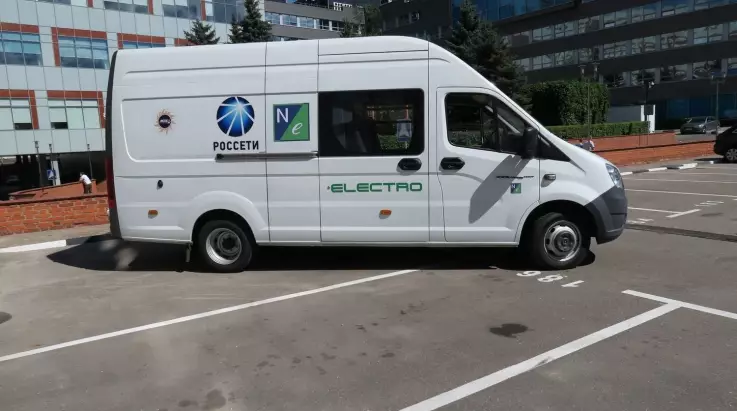
The whole idea was founded in 2014, it started with planning on the operational requirements, estimating daily number of covered kilometres and charging capability. The local development refers to year 2017, when 1,000 charging stations should be located on the territory of the Russian Federation. Another assumption is focused on 2025, when the all state-owned enterprises would have at least 10% of their vehicle fleet electrically-powered. Another assumption is also price reduction of batteries, to which should come after commissioning TESLA Gigafactory, which is currently under construction. [Gallery-XWPQRHMA] In addition to the chassis, the vehicle was only minimally modified. The fossil power unit was replaced by a Siemens electric motor with liquid cooling with permanent output of 63 kW, with top-class output of 98 kW and a torque of 300 Nm, which is available almost immediately. The transmission device is a single-stage and ready to handle the planned 330 Nm of torque. Batteries are divided into four blocks, there are three under the floor of the cargo space, and the fourth under the engine. In the winter months the heating of the batteries and cabin provides independent heater Webasto, while cooling the battery is provided by using a special air duct. Classic 12 V battery that is charged from the main battery supplies power to lighting, dashboard, windscreen wipers and other systems. The identical system can be found, for example, in the Nissan Leaf. On-board charger has an output of 22 kW, therefore you can fully recharge from the prevalent charging stations in 3 hours from a standard charging network process takes 8-9 hours. The range is up to 130 km. In the interior you can find the direction selectors and the main circuit breaker, which in case of power failure cuts off the current. Due to the structure the large cargo space of 9.5 meters cubic and useful height of 1927 mm were preserved. Twelve testing low-volume vehicles (approval is valid for 100 cars) should be made, they could be used for example by post or by another transport company. For example, DHL commonly operates electric commercial vehicles across the whole Europe. Compared to diesel variant, the electric version is three times cheaper. The current price of the car is about 2.6 million CZK, the price should be reduced in the future and purchase of electric vehicles supported under the subsidy program of the Russian Federation for electric vehicles.

















